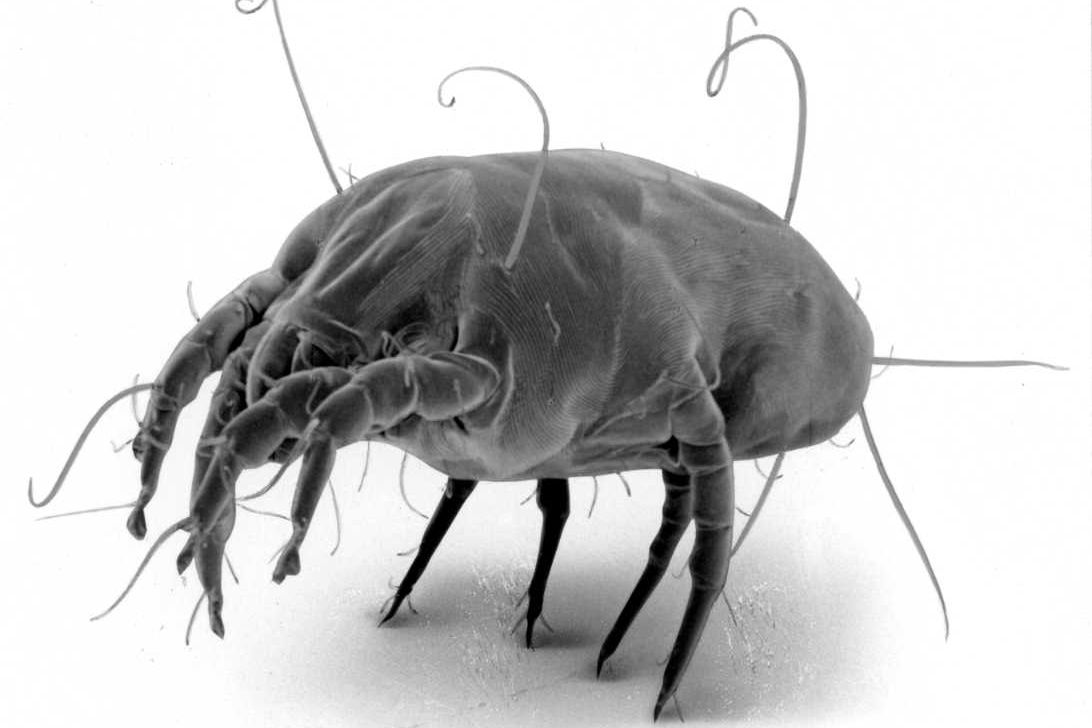
(Berlin, Vienna, 31 October 2016) Scientists from the Charité – Universitätsmedizin Berlin teaching hospital and MedUni Vienna have found out which molecules of the house dust mite the immune system is primarily targeting when children develop allergic rhinitis an(Berlin, Vienna, 31 October 2016) Scientists from the Charité – Universitätsmedizin Berlin teaching hospital and MedUni Vienna have found out which molecules of the house dust mite the immune system is primarily targeting when children develop allergic rhinitis and asthma. These findings open up new approaches for more accurate treatment options and for successful prediction and prevention of this disease. The study has been published in the current issue of the specialist "Journal of Allergy and Clinical Immunology".
Together with researchers from the Medical University of Vienna led by Rudolf Valenta, scientists headed up Paolo Maria Matricardi, Head of the Molecular Allergology working group at the Charité hospital, analysed data and blood samples from 722 children living in Germany, who had regularly taken part in surveys and investigations for more than 20 years since they were born in 1990, as participants in the Multicentre Allergy Study (MAS). In combination with methods from nanotechnology, proteins from the house dust mite were used to characterise the origins and development of the immune response from childhood, through adolescence and into early adulthood.
The researchers discovered that antibodies against three house dust mite molecules known as "Der p 1", "Der p 2" and "Der p 23" had been measured in the blood of preschool children, often before there were any clinical signs of the disease. In some children, this was followed by a so-called "sensitisation cascade", that is to say gradual spreading to include further dust mite molecules, a process known as "molecular spreading". Children who formed antibodies against a large number of molecules had a higher risk of developing allergic rhinitis and asthma during their lifetimes. On the other hand, children who had developed the first antibodies when they were very young and had one or two parents who suffered from hay fever, had a higher probability of developing an allergy. Furthermore, it was found that healthy preschool children, who were already producing antibodies against both the molecules "Der p 1" and "Der p 23", more frequently developed asthma while they were still at school.
"Allergy to house dust mites develops like an avalanche in childhood. It starts early on with only one or very few molecules and, as it progresses, spreads to include a much broader molecular spectrum," explains Daniela Posa, lead author of the publication. "The broader the spread of molecular sensitisation, the higher the risk of developing asthma," she adds. The scientists are confident that these findings will open up new possibilities for the prevention and treatment of allergic rhinitis and asthma caused by house dust mites.
Service: Journal of Allergy and Clinical Immunology
Posa D. et al. 2016. Evolution and predictive value of IgE responses toward a comprehensive panel of house dust mite allergens during the first 2 decades of life. Journal of Allergy and Clinical Immunology. 2016 Oct 25. doi: 10.1016/j.jaci.2016.10.XXX - Epub ahead of print